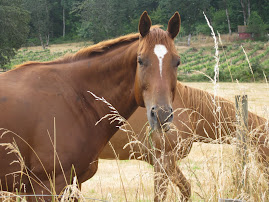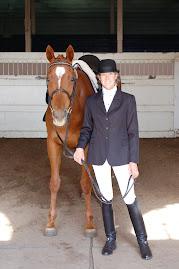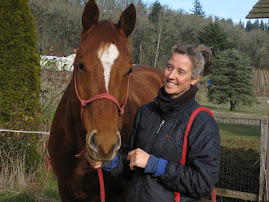I read an article in the National Geographic about Failure.
The gist of the reading was how much is learned through Failure.
There were numerous examples of explorers going off into the world to perform their missions only to fail in it's execution and come home with their tails between their legs...and in some cases, pay the ultimate price and not come home at all.
Of course, the famous journey of the explorer, Shackleton, was a feature. Despite getting his ship hopelessly lodged in the ice and failing to reach the South Pole, Shackleton and all his men survived. Deemed a "successful failure"....a bit of an oxymoron.
I have to say, this article had a profound effect on me. Although I am not a world explorer, I am an explorer in the equine world. Smaller journeys that still, however, involve what many may think is, considerable Failure.
Not winning the class. Having a "bad" ride. The project horse who has other ideas of who is in charge.
It is my view that Failure is just that - Somebody else's view. What somebody sees as non-productive (failure), I see as successful. I took what wasn't working well and adapted.
One of the first things I learned as a young equestrian was humility. At my first show, my horse, Maarana, had other ideas. She was not happy with being at the show, let alone being ridden. I was about 12 years old and I was mad! I remember at the time that I wanted to go home. Thankfully, the gal I was riding with gave me a choice: Go home (whine) Or buck-up and deal with it and Problem Solve the situation (aroo!).
So what started as a Failure in my young life, turned into an opportunity to learn and grow. I do believe the folks call it "Building Character." I chose to buck-up (aroo!) and we kept showing. We didn't win any classes, but I learned to deal with a situation that was less than perfect.
It was my first lesson in humility. Humility is a key component in seeing a difficult situation as an opportunity. A situation to examine and modify (The Marines would say: Adapt. Adopt. Improve (they also say boo'ya!)), instead of letting that difficult situation ruin the day because it wasn't Perfect. Humility allows for original thinking and creativity....the catalysts of success.
The drowning force of original thinking and success is Egoism and looking good to others. When Ego and the desire to "Look Good" shadow the numerous successes hidden in a situation, that is the ultimate Failure.
The original solutions are ignored because the mind is looking outward, worrying about what others may be thinking. The outward mindset closes the door on original thinking and closes the mind to creative solutions because what They think becomes the mantra. This, in turn, becomes a cycle in which anytime the work is not Ideal, failure occurs....
Just imagine how many men would have survived if Shackleton had just sat stuck in the ice and worried about looking good. He looked at the situation and adapted to insure the survival of his men.
When a Shackleton moment arises, look inward. Remember that even though you and your horse may be a little stuck, taking a moment to step back, looking inward to what you know, and ignoring Them, can create a completely new solution that will serve the situation well and create a fantastic success.


